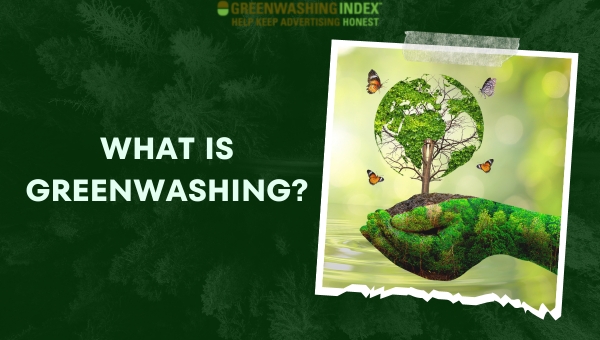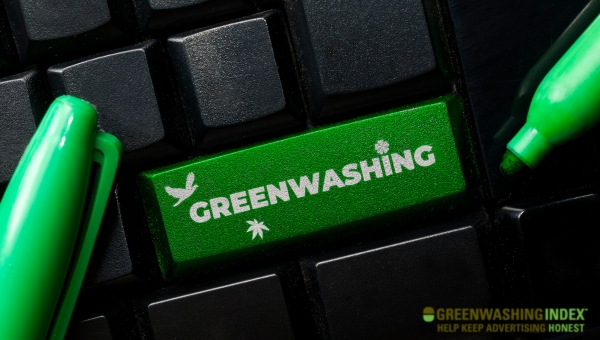Greenwashing has emerged as a buzzword in both the marketing world and amongst environmentally conscious consumers. But what is greenwashing? In essence, it refers to the practice of making misleading or unsubstantiated claims about the environmental benefits of a product, service, or company in an attempt to capitalize on the growing consumer demand for eco-friendly options.
As awareness of the environmental impact of our choices continues to grow and individuals increasingly prioritize sustainability, it’s crucial to be able to distinguish between genuine environmentally-friendly practices and deceptive marketing schemes.
This blog post aims to delve deeper into the concept of greenwashing by examining its origins, exploring how it works, illustrating real-life examples, and providing insights into how marketers can adopt ethical practices while effectively communicating their sustainability efforts. By understanding the ins and outs of greenwashing in marketing, you will be better equipped to identify these deceptive practices and actively contribute to a more sustainable future.

Understanding Greenwashing
Greenwashing is a term coined in the 1980s by environmentalist Jay Westervelt, and it is derived from the concept of “whitewashing,” which refers to covering up or glossing over undesirable information. In the context of marketing and sustainability, greenwashing describes the practice of portraying products, services, or company policies as environmentally friendly when they are not overstating their eco-friendly aspects.
Definition and Origin
In order to better understand greenwashing, let’s break down its key components:
- Misleading claims: Making false or exaggerated claims about a product’s environmental benefits.
- Deceptive imagery: Using visuals that evoke a sense of eco-friendliness, like green color palettes or nature images.
- Vague language: Employing ambiguous terms that sound environmentally responsible but lack clear meaning.
The emergence of greenwashing can be traced back to several factors, including increased public awareness of environmental issues, pressure on companies to adopt sustainable practices, and growing demand for eco-friendly products.
Intention Behind the Practice
There are various intentions behind greenwashing practices; some may be more insidious than others. Common motivations include:
- Appealing to eco-conscious consumers: As sustainability becomes an important consideration for buyers, some companies resort to deception in order to capture this market segment.
- Improving brand image: Companies may choose to engage in greenwashing as a strategy to enhance their public perception and gain goodwill among consumers.
- Complying with regulations: With greater scrutiny on corporate operations due to legislation such as the Paris Agreement and other regional policies, companies might manipulate information or utilize misleading tactics in order to appear compliant.
Not all instances of greenwashing are textbook cases of deliberate deception; sometimes, it could result from miscommunication or lack of understanding about environmental standards and practices.
How does Greenwashing Work?
Greenwashing works by capitalizing on public concern for environmental issues and manipulating consumers’ perceptions through misleading marketing tactics. To fully comprehend the workings of greenwashing, it is important to examine various methods employed by companies:
Misleading Claims and Statements
One central aspect of greenwashing involves making false or exaggerated claims about a product or service’s environmental benefits. These assertions can be found in product descriptions, packaging, advertisements, and even corporate responsibility reports.
Some examples of misleading claims include:
- Exaggerated benefits: Stating that a product saves more energy or has a lower carbon footprint than it actually does.
- Unsupported assertions: Making claims without providing concrete evidence to back them up.
- Irrelevant information: Highlighting minor eco-friendly attributes while ignoring larger negative impacts on the environment.
Using Eco-friendly Imagery
Another element of greenwashing lies in tapping into the power of visuals to create an impression of sustainability. Companies may use images like leaves, trees, or natural landscapes alongside their products to evoke a sense of eco-friendliness and make consumers believe that purchasing these products will contribute positively to the environment.
Color choice also plays a significant role in greenwashing tactics: shades of green are frequently exploited as they symbolize nature and environmentalism.
Ambiguity in Terminology and Labeling
Vague language is another common characteristic of greenwashing campaigns. By using ambiguous terms or assertions that sound environmentally responsible but lack clear meaning, companies mislead consumers into thinking their offerings are more sustainable than they truly are.
Some examples of vague language include:
- Buzzwords: Utilizing phrases like “eco-friendly,” “natural,” or “green” without clear definitions attached.
- Misleading labels: Placing unverified symbols or logos resembling certifications on packaging to give an illusion of third-party endorsement.
- Lack of context: Failing to provide information on industry standards, guidelines, or comparisons with alternative products.
Selective Disclosure of Information
Companies engaging in greenwashing may also resort to selective disclosure, emphasizing and publicizing their environmentally friendly initiatives while conveniently omitting any negative impacts their operations may have on the environment. This one-sided portrayal can skew consumers’ impressions of a company’s overall commitment to sustainability and create a false sense of assurance in its products.
Motivations Behind Greenwashing
In order to tackle the issue of greenwashing, it is crucial to understand the key drivers that motivate companies to adopt such deceptive marketing tactics. Identifying the motivations behind greenwashing can help in crafting effective strategies to combat and prevent this unethical practice.
Consumer Expectations for Environmental Responsibility
The growing consumer demand for environmentally responsible products and services is a significant factor that motivates greenwashing. As people become increasingly environmentally conscious and aware of their purchasing choices’ impact on the planet, companies recognize the potential profit in capturing this market segment.
By presenting themselves as eco-friendly, companies aim to:
- Attract environmentally conscious consumers
- Gain a competitive edge over other businesses not engaged in sustainable practices
- Enhance brand reputation by aligning with emerging eco-trends
Competitive Advantage in the Market
The pursuit of competitive advantage is another driving force behind greenwashing activities. With an increasingly crowded market and companies vying for consumers’ attention, businesses often turn to greenwashing as a means to differentiate themselves from their competitors.
For instance, showcasing their so-called “green” products may allow companies to:
- Price their products at a premium due to perceived environmental benefits
- Position themselves as industry leaders in sustainability
- Capitalize on niche markets focused on eco-friendly consumer goods
Legal and Regulatory Pressures
Companies might also use greenwashing techniques as a response to legal requirements or industry standards related to environmental performance. Faced with stringent regulations or just satisfying basic compliance requirements, some businesses might choose deception tactics rather than taking substantive steps toward sustainability.
Reasons for regulatory-driven greenwashing include:
- Avoiding potential legal penalties or fines associated with non-compliance
- Reducing the risk of negative publicity due to a perceived lack of environmental accountability
- Appeasing stakeholders who are pushing for more sustainable corporate practices
Establishing a Favorable Corporate Image
Greenwashing can effectively influence public opinion and help companies cultivate a positive image in the minds of consumers, investors, and other stakeholders. By highlighting their environmental commitments, businesses might seek the following:
- Increased consumer trust and loyalty
- Strengthened relationships with investors who prioritize sustainability in their investment decisions
- Public recognition and potential awards for alleged corporate responsibility
Understanding these motivations behind greenwashing provides insights into why companies engage in deceptive practices, as well as highlighting where efforts can be focused to address this issue from both the consumer’s perspective and from within the businesses themselves.

Examples of Greenwashing
To better understand the concept of greenwashing, it is helpful to examine real-life examples from various industries. These case studies aim to provide context and insight into how deceptive marketing practices can mislead consumers and distort public perception of a company’s environmental commitment.
Food Industry
One of the most prevalent areas where greenwashing appears is within the food industry, particularly involving products labeled as “organic” or “natural.”
- Cereal brands: Some popular cereal brands have been accused of greenwashing by using buzzwords like “whole grain” or “natural” on their packaging when in reality, their products contain significant amounts of added sugar or processed ingredients.
- Dairy substitutes: Certain dairy alternative producers have faced criticism for claiming that their products are more sustainable than conventional dairy, despite packaging them in single-use, non-recyclable containers.
Automobile Industry
In an attempt to appeal to environmentally conscious consumers, some automobile manufacturers have advertised their vehicles as eco-friendly solutions without fully representing the impact they still pose on the environment.
- Diesel emissions scandal: Known as “Dieselgate,” this controversy involved major car manufacturers falsifying emission levels in diesel-powered vehicles during controlled tests to make them appear more environmentally friendly than they genuinely were.
- Eco-friendly features: Some carmakers promote fuel efficiency and reduced tailpipe emissions while neglecting to address other environmental impacts associated with vehicle manufacturing, such as resource extraction or energy-intensive production processes.
Cosmetics and Beauty Industry
Cosmetics companies have also come under fire for espousing false sustainability claims through misleading labels and advertising campaigns.
- Natural ingredients claims: Beauty product companies often market their offerings as natural or organic when a closer look at ingredient lists reveals synthetic chemical components.
- Cruelty-free claims: Certain beauty brands have claimed to be cruelty-free while continuing animal testing practices or using suppliers with known animal testing policies.
Apparel Industry
The apparel industry, responsible for a significant portion of global pollution, has attempted to mask its environmental impact through dubious marketing tactics.
- Fast fashion: Prominent fast-fashion retailers have launched “sustainable” or “eco-friendly” clothing lines, but their low-cost and disposable nature contributes to waste generation and resource depletion.
- Ethical supply chains: Some apparel manufacturers assert their commitment to ethical sourcing practices but have been linked to inhumane working conditions in garment factories or exploitation of natural resources.
Energy Industry
Companies within the energy sector have long been scrutinized for their role in contributing to global warming, and many have used greenwashing as a means to deflect blame and refocus the conversation on environmental solutions.
- Coal and natural gas: Companies have attempted to rebrand coal as “clean coal” or portray natural gas as a cleaner alternative by downplaying their greenhouse gas emissions and environmental impacts during production processes.
- Green energy solutions: Some energy providers offer “green” plans with renewable energy sources but fail to disclose that the majority of power is still generated from fossil fuels, merely supplementing the grid with green energy instead of replacing it entirely.
In each of these cases, the businesses involved attempt to redirect attention away from negative environmental consequences by amplifying positive aspects or employing deceptive tactics that trivialize the actual impact of their operations on ecosystems. By consuming these examples and understanding the various ways greenwashing can manifest across industries, individuals can arm themselves with knowledge and vigilance against deceptive marketing practices aimed at exploiting consumer desire for sustainable goods and services.
Detecting Greenwashing Red Flags
While greenwashing tactics can be quite sophisticated, being aware of certain red flags can help you identify misleading marketing techniques and make informed decisions as consumers. Here are some possible indicators to be vigilant about:
Checklist to Identify Misleading Marketing Tactics
- Overemphasis on eco-claims: Be cautious if a product’s marketing focuses heavily on environmental claims while providing little information about its actual performance or benefits.
- Vague or unsubstantiated language: Look for specific details and evidence rather than falling for ambiguous or unsupported assertions.
- Look-alike labels: Verify the legitimacy of any certifications or endorsements on products by researching their origins and credibility, as some companies may use labels designed to mimic established eco-certifications.
- Lack of transparency: Be wary of companies that do not provide clear information about their supply chain, manufacturing processes, or environmental performance.
- Inconsistent company practices: Pay attention to the overall sustainability efforts of the company, not just the specific product that claims to be eco-friendly.
Tips to Ensure Credibility of Eco-friendly Claims
To protect yourself from greenwashing and ensure you are making responsible consumption choices:
- Do your research: Investigate the products you intend to purchase and familiarize yourself with their manufacturers’ sustainability initiatives, sourcing policies, and corporate responsibility commitments.
- Seek reliable certifications: Look for credible third-party certifications such as Forest Stewardship Council (FSC), LEED, or Fair Trade that have standards in place for evaluating a product’s eco-friendliness.
- Ask questions and demand transparency: Don’t hesitate to inquire about a company’s environmental initiatives directly, either through customer service or social media platforms, to push for more information and clarity.
- Stay informed: Keep updated on industry developments, regulations, and news about greenwashing scandals or investigations in order to protect yourself from deceptive marketing tactics.
By being mindful of potential greenwashing red flags and arming yourself with tools for validation, you can make better choices as a consumer and contribute to healthier, more sustainable practices in the market.
The Negative Impacts of Greenwashing
While greenwashing might initially appear as a harmless marketing strategy, it can lead to a range of negative consequences for consumers, the environment, and even companies themselves. Below are some of the harmful effects that can result from greenwashing practices:
Erosion of Consumer Trust
One of the most significant impacts of greenwashing is the erosion of consumer trust in products and brands. As people become more aware of environmental issues and seek to make responsible choices in their consumption, they rely on accurate information from businesses. When companies engage in deceptive marketing tactics like greenwashing, they exploit their customers’ goodwill and ultimately damage their credibility.
Consumers who feel misled by greenwashed products may develop skepticism towards other eco-friendly claims from both themselves or other companies, thus hindering the growth of sustainable industries.
Undermining Genuine Sustainable Actions
Greenwashing not only misleads consumers but also puts genuinely sustainable businesses at a disadvantage by creating confusion in the market. Many organizations invest time, money, and effort into adopting real environmentally friendly practices within their operation or offering truly sustainable products.
When such authentic efforts are overshadowed or discredited due to prevalent greenwashing tactics, it discourages further innovation and progress within sustainability sectors.
Damage to Corporate Reputation
Another repercussion of greenwashing is the potential harm it poses to a company’s reputation. As public awareness about misleading marketing strategies grows – thanks in part to increased access to information through social media platforms – businesses found guilty of practicing greenwashing face severe backlash from customers, advocacy groups, and even regulatory bodies.
Recovering from reputational damage can be a challenging and lengthy process for companies: they may experience drops in sales or stock prices, lose partnerships or clients, incur legal penalties for false advertising violations, or even face boycotts organized by disenchanted consumers.
Hindering Environmental Progress
Ultimately, the most devastating consequence of greenwashing is its adverse effect on the environment. When consumers unknowingly purchase products that are not truly sustainable, it perpetuates harmful practices, generates waste, and undermines efforts to mitigate environmental damage.
Greenwashing can also impede the adoption of more sustainable systems and policies by diverting attention from pressing ecological concerns or lulling consumers into believing that sufficient action is being taken.
Combating and Preventing Greenwashing: Best Practices for Marketers
To effectively counteract greenwashing and foster genuine sustainability within the business world, it’s crucial for marketers to adopt best practices that promote transparency, credibility, and environmental responsibility. Here are some guidelines that can help marketers create marketing campaigns that convey a company’s genuine efforts toward sustainability without resorting to deceptive tactics.
Establish Transparent Communication with Consumers
Honesty is vital when it comes to communicating about your brand’s eco-friendly initiatives. Adopt an open and transparent approach in sharing information regarding your company’s environmental actions:
- Provide specific details: When making eco-friendliness claims, highlight tangible facts and figures to support these assertions.
- Give context: Offer comparisons with alternative products or services on the market to help consumers understand the real environmental impact of choosing your offerings.
- Show progress: Regularly share company updates regarding new sustainability initiatives or accomplishments made in reducing negative environmental impacts.
Pursue Certifications from Credible Institutions
Third-party certifications play a vital role in validating the authenticity of your company’s environmental efforts. To enhance the credibility of eco-friendly claims:
- Identify relevant certifications: Determine which certifications align with both your business practices and consumer expectations within your industry.
- Meet compliance requirements: Work towards meeting the necessary criteria established by certification bodies for policies, sourcing, manufacturing processes, or waste management.
- Transparently display certifications: Showcase certified symbols or logos prominently on product packaging or in marketing materials.
Some reputable certification organizations include B Corporation, Organic Materials Review Institute (OMRI), Green Seal, and Greenguard.
Collaborate with Stakeholders to Achieve Sustainability Goals
Forming partnerships with like-minded organizations, local communities, and other stakeholders can significantly enhance your company’s sustainability efforts and build credibility:
- Engage employees: Encourage employee participation in sustainability initiatives by offering training and education programs, setting up green teams, or incentivizing eco-friendly behaviors.
- Partner with NGOs or non-profit organizations: Collaborate with organizations that share similar values to raise awareness about environmental issues or jointly develop solutions that can benefit both parties.
- Foster community involvement: Initiate projects that positively impact the local community, such as tree-planting initiatives or educational workshops on environmental topics.
Continuously Improve and Evolve Sustainability Practices
A company’s commitment to sustainability should be an ongoing journey marked by continuous improvement, learning, and growth:
- Set clear goals: Establish measurable objectives related to minimizing your company’s environmental footprint and work towards achieving those targets consistently.
- Monitor progress: Regularly assess the effectiveness of your environmental initiatives through audits, performance reviews, or customer feedback.
- Stay updated on industry trends: Stay informed about advancements in sustainable technologies or practices within your industry to identify opportunities for growth and improvement.
By embracing these best practices for combating and preventing greenwashing, marketers can foster a culture of trust among their customers while demonstrating a genuine commitment to sustainable business practices. This approach not only benefits the environment but also enhances a company’s brand image and contributes to long-term success in an increasingly eco-conscious market landscape.
FAQs
What is greenwashing in marketing?
Greenwashing is the practice of misleading consumers by portraying products, services, or company policies as environmentally friendly when they are not or overstating their eco-friendly attributes.
How can I identify greenwashing tactics?
To detect greenwashing, look for vague language, unsubstantiated claims, misleading labels, and an overemphasis on eco-claims. Always research and verify any certifications or endorsements before making a purchase.
Why do companies engage in greenwashing?
Companies may engage in greenwashing to appeal to eco-conscious consumers, improve their brand image, gain a competitive advantage in the market, or comply with environmental regulations.
Can greenwashing be harmful to the environment?
Yes, greenwashing can hinder environmental progress by perpetuating harmful practices and undermining genuine sustainability efforts. It also diverts attention from pressing ecological issues that need to be addressed by both regulators and companies.
How can marketers avoid greenwashing?
Marketers can combat greenwashing by adopting best practices such as transparent communication with consumers, pursuing credible certifications, collaborating with stakeholders to achieve sustainability goals, and continuously improving their environmental practices.


